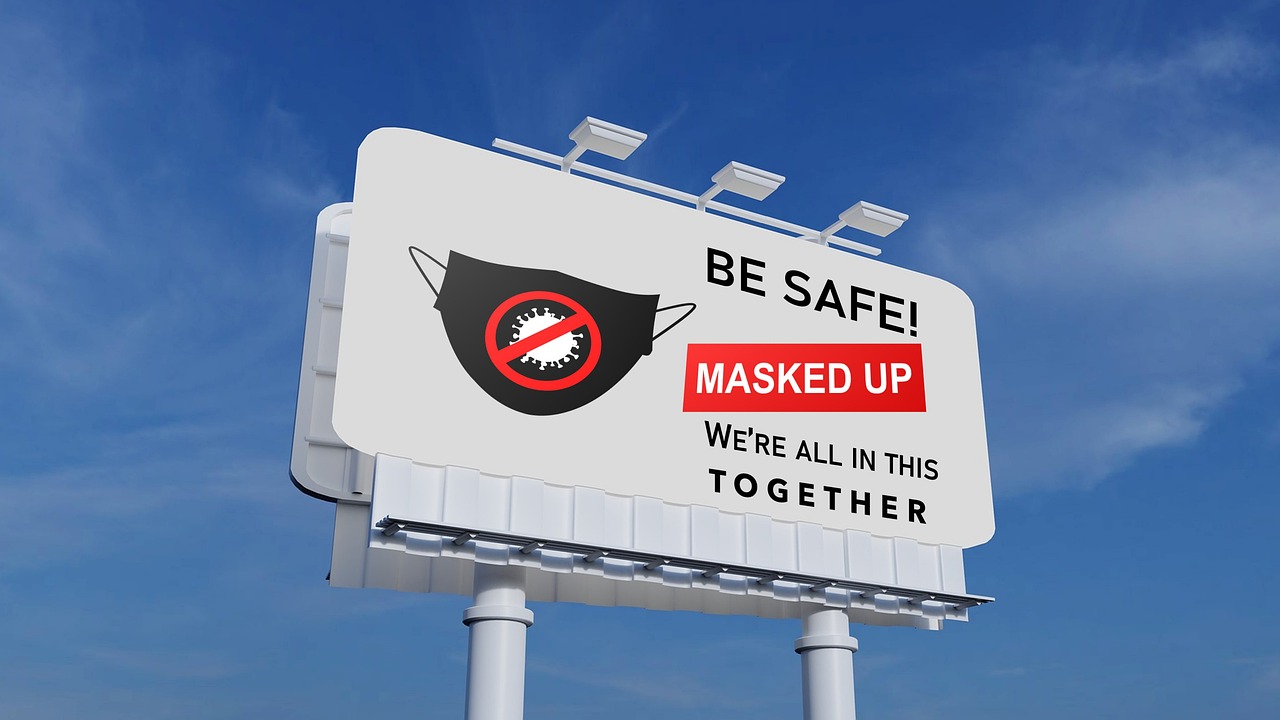Human Behavior - The Ultimate Factor in Safety Measures
When it comes to safety, one might think that protocols, rules, and regulations are the ultimate safeguards. However, the reality is that human behavior is often the most significant factor influencing the effectiveness of these measures. Why is that? Well, humans are unpredictable creatures, driven by emotions, biases, and social influences that can either enhance or undermine safety protocols. In this article, we’ll dive deep into the intricate relationship between human behavior and safety measures, exploring how understanding this dynamic can lead to safer environments.
Consider this: a well-designed safety protocol is like a beautifully crafted ship, but if the crew is not trained or motivated to steer it correctly, it will inevitably drift off course. This analogy highlights the importance of not only having safety measures in place but also ensuring that the people responsible for implementing them are fully engaged and aware of their significance. By examining how human behavior plays a role in safety, we can identify key areas for improvement and ultimately create a culture where safety is prioritized and practiced consistently.
One of the primary reasons why human behavior is so pivotal in safety measures is due to the psychology of risk perception. People assess risks based on personal experiences, societal influences, and even emotional responses. For instance, someone who has witnessed a workplace accident may perceive certain tasks as more dangerous, leading to heightened caution. Conversely, an individual who has never experienced an incident may underestimate risks, resulting in complacency. Understanding these psychological factors allows organizations to tailor their safety messages and training programs to resonate better with employees, ultimately leading to improved safety outcomes.
Moreover, effective communication is essential in bridging the gap between safety protocols and human behavior. Clear messaging can significantly enhance adherence to safety practices. When employees understand not only the what but also the why behind safety measures, they are more likely to engage with them meaningfully. For example, instead of merely instructing workers to wear helmets, explaining the consequences of head injuries and sharing real-life stories can create a stronger emotional connection to the safety practice. This emotional engagement can be the difference between compliance and genuine commitment to safety.
As we explore further, we will also discuss the role of training and education in shaping safety behavior. Comprehensive training programs that are interactive, relatable, and tailored to the specific environment can significantly influence how individuals perceive and act on safety protocols. When employees feel empowered and knowledgeable, they are more likely to take ownership of their safety and that of their peers. Involving employees in safety initiatives fosters a sense of accountability and can transform a culture of compliance into one of commitment.
- Why is human behavior crucial for safety measures? Human behavior directly influences how individuals perceive and adhere to safety protocols, making it a critical factor in preventing accidents.
- How can organizations improve safety through communication? By using clear, relatable messaging that explains the importance of safety measures, organizations can enhance employee engagement and compliance.
- What role does training play in safety compliance? Effective training programs equip employees with the knowledge and skills necessary to understand and implement safety protocols confidently.
- How can cultural factors impact safety behavior? Cultural norms and values shape attitudes toward safety, influencing compliance and the effectiveness of safety measures in diverse communities.

The Psychology of Risk Perception
Understanding how individuals perceive risks is crucial for developing effective safety measures. Our brains are wired to assess risk constantly, often leading us to make decisions based on emotions rather than facts. This phenomenon is known as risk perception, and it plays a significant role in how we react to potential dangers in our environment. Imagine walking down a busy street; your mind automatically weighs the risks of crossing the road versus staying on the sidewalk. This internal dialogue shapes our choices, sometimes leading us to overestimate or underestimate risks based on personal experiences and societal influences.
One key factor that influences risk perception is cognitive biases. These are systematic patterns of deviation from norm or rationality in judgment. For example, the availability heuristic leads us to judge the frequency or likelihood of an event based on how easily examples come to mind. If you’ve recently heard about a plane crash, you might irrationally fear flying, despite statistics showing it’s one of the safest modes of transportation. Similarly, the optimism bias can cause people to believe they are less likely to experience negative events compared to others, which can lead to risky behaviors.
Emotional factors also play a significant role in shaping our perception of risk. Fear, anxiety, and past experiences can cloud our judgment, leading us to react more strongly to certain situations than warranted. For instance, if someone has had a negative experience with a dog, they may perceive all dogs as threats, even the friendly ones wagging their tails. This emotional response can significantly affect compliance with safety measures, as individuals may either overreact or disregard protocols based on their feelings.
Furthermore, social influences cannot be ignored. The behaviors and attitudes of those around us often shape our own perceptions of risk. If a coworker downplays the importance of wearing safety gear, others might follow suit, leading to a culture where safety is not prioritized. This social contagion effect demonstrates how risk perception is not only an individual psychological process but also a collective one influenced by group dynamics.
To illustrate these points, let's take a look at a simple table that summarizes the key factors affecting risk perception:
| Factor | Description |
|---|---|
| Cognitive Biases | Systematic patterns that affect judgment and decision-making. |
| Emotional Factors | Feelings that can cloud judgment and influence risk assessment. |
| Social Influences | Group dynamics that shape individual perceptions and behaviors. |
Recognizing these psychological factors is essential for enhancing safety protocols. By understanding how individuals perceive risks, organizations can tailor their safety measures to address these biases and emotional responses effectively. For instance, providing clear, factual information alongside emotional support can help counteract irrational fears and encourage adherence to safety protocols.
In conclusion, the psychology of risk perception is a multifaceted issue that goes beyond mere statistics. By delving into the cognitive biases, emotional factors, and social influences that shape our understanding of risk, we can create more effective safety measures that resonate with individuals on a deeper level. After all, safety is not just about rules and regulations; it’s about understanding the human experience.

Effective communication is the bedrock of any successful safety protocol. Imagine walking into a workplace where safety signs are barely visible, and instructions are delivered in a hurried, unclear manner. Sounds chaotic, right? This scenario highlights the importance of clear and concise messaging in ensuring everyone understands the safety measures in place. When communication is lacking, it can lead to confusion, mistakes, and, ultimately, accidents. So, how can we make sure that communication around safety is as effective as possible?
First and foremost, it’s crucial to establish clear messaging. This means using straightforward language that everyone can understand. Technical jargon may impress some, but it can alienate others. For instance, if a safety protocol requires the use of specific equipment, detailed instructions should be provided in simple terms. A good practice is to utilize visual aids like diagrams or infographics, which can make understanding complex information much easier. After all, a picture is worth a thousand words!
Moreover, feedback mechanisms are vital in reinforcing safety protocols. Employees should feel empowered to voice their concerns and provide input on existing safety measures. This two-way communication fosters a culture of safety awareness, where everyone is on the same page. Regular safety meetings can be an excellent platform for discussing protocols and gathering feedback. In these meetings, it’s not just about lecturing; it’s about engaging in a dialogue. Employees should be encouraged to share their experiences and suggestions, which can lead to improvements in safety practices.
Another essential aspect of communication in safety protocols is the timing and frequency of messages. Just like a good song needs a catchy chorus, safety reminders need to be frequent and memorable. Consider using digital platforms such as emails, apps, or even text messages to send out regular safety tips and updates. This not only keeps safety at the forefront of everyone's mind but also reinforces the idea that safety is a continuous process, not just a one-off training session.
Lastly, let’s not underestimate the power of cultural sensitivity in communication. In diverse workplaces, understanding cultural backgrounds can significantly influence how safety messages are received. Tailoring communication to respect and acknowledge different cultural perspectives can enhance understanding and compliance. For example, if a team has members from various cultural backgrounds, it might be beneficial to present safety training in multiple languages or through culturally relevant examples.
In summary, effective communication in safety protocols is about clarity, engagement, and cultural awareness. By prioritizing these elements, organizations can create a safer environment where everyone is informed, involved, and invested in maintaining safety standards.
- Why is communication important in safety protocols?
Effective communication ensures that all employees understand safety measures, reducing the likelihood of accidents and errors. - How can I improve communication in my workplace?
Implement clear messaging, utilize visual aids, encourage feedback, and use digital platforms for regular updates. - What role does cultural sensitivity play in safety communication?
Understanding cultural differences can enhance the effectiveness of safety messages and promote compliance among diverse teams.

When it comes to safety measures, training and education are not just optional add-ons; they are essential components that can significantly influence behavior and compliance. Imagine stepping into a workplace where safety protocols are not just written on a wall but are ingrained in the culture. This transformation is largely possible through effective training programs that engage employees and equip them with the necessary knowledge to navigate risks.
Training is akin to planting seeds in a garden. You can water and nurture those seeds, but without the right environment, they may never bloom. Similarly, employees may have the potential to prioritize safety, but without proper guidance and education, that potential may remain dormant. Comprehensive training programs can provide the tools and understanding needed to recognize hazards, assess risks, and implement safety measures effectively.
Moreover, the impact of training goes beyond just compliance; it fosters a sense of responsibility and ownership among employees. When individuals are educated about the **'why'** behind safety protocols, they are more likely to internalize these practices. For instance, a well-structured training session can cover various aspects, such as:
- Understanding common workplace hazards
- Learning about emergency procedures
- Practicing proper equipment handling
- Encouraging open communication about safety concerns
The effectiveness of training can also be evaluated through various methods, such as surveys, practical assessments, and feedback sessions. These evaluations help organizations understand the strengths and weaknesses of their training programs, allowing them to make necessary adjustments. After all, safety training should not be a one-time event but an ongoing process that evolves with the changing dynamics of the workplace.
In conclusion, the role of training and education in safety measures cannot be overstated. By investing in comprehensive training programs, organizations not only comply with regulations but also create a culture where safety is paramount. This proactive approach can lead to fewer accidents, reduced liability, and a more engaged workforce, ultimately contributing to a safer environment for everyone involved.
- Why is training important for safety measures?
Training equips employees with the knowledge and skills necessary to identify risks and implement safety protocols effectively. - How often should safety training be conducted?
Safety training should be an ongoing process, with refresher courses and updates provided regularly to adapt to new risks and regulations. - What types of training are most effective?
Interactive training methods, such as hands-on practice and scenario-based learning, tend to be more effective than traditional lecture-based approaches.

Engaging employees in safety practices is not just a checkbox on a compliance list; it's a vital component of creating a culture where safety is prioritized. When employees feel involved in safety initiatives, they are more likely to take ownership of their actions and be proactive about maintaining a safe work environment. Think of it like a team sport: when everyone plays their part, the team performs better. Here are some effective strategies to foster that engagement:
First and foremost, communication is key. It’s essential to create an open dialogue where employees feel comfortable sharing their thoughts and concerns regarding safety. Regular meetings, suggestion boxes, and feedback sessions can be excellent platforms for this. When employees see that their voices matter, they are more likely to engage actively in safety practices. Consider implementing a safety ambassador program, where selected employees champion safety initiatives. This not only empowers individuals but also fosters a sense of community around safety.
Another effective approach is to incorporate gamification into safety training and practices. By turning safety protocols into engaging challenges or competitions, you can motivate employees to participate actively. For example, you might create a leaderboard that tracks safety compliance or organize safety drills with rewards for teams that excel. This not only makes safety training more enjoyable but also encourages a sense of camaraderie and healthy competition among employees.
Moreover, recognizing and rewarding safe behavior can significantly enhance engagement. When employees see that their efforts to maintain safety are acknowledged, it boosts morale and reinforces positive behaviors. Consider implementing an incentive program that rewards individuals or teams for demonstrating exceptional safety practices. This could be as simple as a shout-out in a company newsletter or more tangible rewards like gift cards or extra time off.
Lastly, providing continuous education and training is crucial. Safety practices should not be a one-time training session but a continuous learning process. Regular workshops, refresher courses, and hands-on training can keep safety at the forefront of employees' minds. Incorporating real-life scenarios and case studies can make these sessions more relatable and impactful. When employees understand the real-world implications of safety practices, they are more likely to take them seriously.
In conclusion, engaging employees in safety practices is about creating an environment where safety is a shared responsibility. By fostering open communication, introducing gamification, recognizing safe behavior, and providing ongoing education, organizations can cultivate a culture of safety that resonates with everyone. After all, when safety becomes a collective effort, the entire organization benefits.
- Why is employee engagement important in safety practices? Employee engagement is crucial because it fosters a sense of ownership and accountability, leading to a safer work environment.
- How can communication improve safety practices? Open communication allows employees to voice concerns, share ideas, and feel valued, which enhances their commitment to safety protocols.
- What are some effective ways to recognize safe behavior? Recognition can be done through awards, shout-outs in meetings, or incentive programs that reward safe practices.
- How often should safety training be conducted? Safety training should be ongoing, with regular refreshers and updates to keep employees informed and engaged.

When it comes to safety training, simply conducting a session isn't enough. The real challenge lies in evaluating the effectiveness of that training. After all, how do we know if the information has truly resonated with participants and if their behaviors have changed as a result? To tackle this, organizations need a systematic approach to assess training outcomes. One effective method is to use a combination of qualitative and quantitative metrics.
For starters, organizations can implement pre-and post-training assessments. These assessments can help gauge participants' knowledge before the training begins and again afterward. By comparing the results, trainers can identify knowledge gaps and measure improvements. However, numbers alone don’t tell the whole story. Engaging in feedback sessions after training can provide invaluable insights into participants' perceptions and experiences. This qualitative data can highlight what worked well and what needs improvement, allowing trainers to refine their programs.
Another crucial aspect of evaluating training effectiveness is observing behavioral changes in the workplace. Are employees applying what they learned? Are they adhering to safety protocols more diligently? To track this, organizations can establish key performance indicators (KPIs) related to safety practices. For instance, a decline in workplace accidents or near misses can indicate that training has positively impacted employee behavior. Moreover, regular safety audits can serve as a barometer for compliance and can be used to measure the long-term effects of training.
To make the evaluation process even more robust, organizations could consider conducting follow-up training sessions or refresher courses. This not only reinforces the initial training but also allows for ongoing assessment of employee knowledge and behavior. By fostering a culture of continuous improvement, companies can ensure that safety remains a top priority.
In summary, evaluating training effectiveness is a multifaceted process that involves a mix of assessments, feedback, and observable changes in behavior. By taking a comprehensive approach, organizations can enhance their safety training programs and ultimately create a safer work environment.
- What are the key metrics for evaluating safety training? Key metrics include pre-and post-training assessment scores, incident reports, and employee feedback.
- How often should safety training be evaluated? Safety training should be evaluated regularly, ideally after each session and through ongoing assessments throughout the year.
- Can feedback from employees improve training effectiveness? Absolutely! Employee feedback is crucial for understanding the training's impact and identifying areas for improvement.
- What role do KPIs play in safety training evaluation? KPIs help measure the effectiveness of training by tracking specific safety-related outcomes, such as reduced incidents or improved compliance.

When we think about safety, we often focus on rules, regulations, and protocols, but what about the human element? This is where behavioral economics comes into play. It’s a fascinating field that examines how psychological factors influence our economic decisions—and guess what? These same factors can dramatically impact our safety-related choices. Imagine you're at a construction site. You see a sign that says, "Wear a hard hat." You might think, "I feel fine without it," and that’s where your perception of risk kicks in. Behavioral economics tells us that our decisions aren't always based on logic; they're influenced by emotions, biases, and social cues.
One of the key concepts in behavioral economics is the idea of loss aversion. This means that people are more likely to take action to avoid a loss than to achieve a gain. For instance, if workers believe that not wearing safety gear could lead to severe consequences, they are more likely to comply with safety measures. This understanding can help organizations frame their safety messages in a way that emphasizes potential losses rather than just the benefits of compliance. An example of this can be seen in the following table:
| Message Type | Effectiveness |
|---|---|
| Gain Framing (e.g., "Wearing a helmet protects you") | Moderate |
| Loss Framing (e.g., "Not wearing a helmet could lead to serious injury") | High |
Another interesting aspect is the role of social influence. People often look to others when making decisions, especially in group settings. If everyone around you is following safety protocols, you're more likely to do the same. This is why fostering a culture of safety is essential. When employees see their peers prioritizing safety, it creates a ripple effect, encouraging everyone to adhere to safety measures. But it’s not just about peer pressure; it’s also about creating an environment where safety is valued and discussed openly.
However, it’s crucial to recognize that not everyone responds to incentives in the same way. Different individuals may have varying levels of risk tolerance based on their backgrounds, experiences, and cultural contexts. For example, someone from a culture that prioritizes collective well-being may be more inclined to follow safety protocols than someone from a culture that emphasizes individual freedom. Understanding these nuances is vital for crafting effective safety messages and protocols.
In conclusion, behavioral economics offers a powerful lens through which we can view safety decisions. By considering the psychological factors that influence behavior, organizations can design safety protocols that resonate with employees on a deeper level. This approach not only enhances compliance but also fosters a proactive safety culture that prioritizes the well-being of all individuals involved.
- What is behavioral economics? Behavioral economics is a field that studies how psychological factors affect economic decision-making.
- How does loss aversion impact safety decisions? Loss aversion suggests that people are more motivated to avoid losses than to achieve gains, influencing their compliance with safety measures.
- Why is social influence important in safety protocols? Social influence encourages individuals to adopt safe behaviors by observing their peers, creating a culture of safety.
- How can organizations tailor safety messages? By understanding cultural contexts and individual differences, organizations can craft messages that resonate more effectively with their workforce.

When we think about safety, it's easy to assume that everyone views it through the same lens. However, cultural influences play a significant role in shaping how individuals perceive and respond to safety measures. Different cultures have unique norms, values, and beliefs that can either enhance or hinder safety behaviors. For instance, in some cultures, there is a strong emphasis on communal responsibility, where individuals feel a shared obligation to ensure the safety of one another. In contrast, other cultures may prioritize individualism, leading to a more personal approach to safety that might neglect collective responsibility.
One fascinating aspect of cultural influence on safety behavior is how risk tolerance varies across societies. Some cultures are more accepting of risks and may engage in behaviors that others would deem unsafe. For example, in certain regions, driving without seatbelts or ignoring safety gear in hazardous environments might be commonplace. Understanding these cultural nuances is essential for developing effective safety protocols that resonate with the people they aim to protect.
To illustrate this further, consider the following table that outlines some common cultural attitudes towards safety behaviors across different regions:
| Region | Common Safety Attitudes | Examples of Safety Practices |
|---|---|---|
| North America | High value on individual safety | Strict enforcement of seatbelt laws |
| Asia | Collective responsibility | Community drills for disaster preparedness |
| Europe | Regulatory compliance | Mandatory safety training for employees |
| Africa | Varied, often context-dependent | Local customs influencing safety gear usage |
As we can see, cultural attitudes can significantly affect how safety measures are perceived and implemented. In regions where communal values are strong, safety initiatives that promote teamwork and collective action might be more successful. Conversely, in cultures that emphasize individualism, safety campaigns may need to appeal to personal responsibility and individual benefits to gain traction.
Moreover, language plays a crucial role in safety communication. The way safety messages are framed can either resonate or fall flat depending on cultural context. For example, using metaphors and analogies that are culturally relevant can make safety messages more relatable. It's essential for organizations to adapt their communication strategies to match the cultural backgrounds of their employees or community members.
Ultimately, acknowledging and understanding these cultural influences is vital for creating effective safety measures. By embracing a culturally responsive approach, we can foster an environment where safety is prioritized, not just as a set of rules to follow, but as a shared value that everyone can commit to. In doing so, we not only enhance compliance with safety protocols but also cultivate a deeper sense of community and shared responsibility.
- How do cultural differences impact safety training?
Cultural differences can affect how individuals perceive and respond to safety training. Tailoring training programs to align with cultural norms can improve engagement and retention of safety practices. - What role does language play in safety communication?
Language is crucial in conveying safety messages effectively. Using culturally relevant language and examples can enhance understanding and compliance. - Can cultural attitudes towards safety change over time?
Yes, cultural attitudes can evolve due to various factors, including education, exposure to new ideas, and shifts in societal values. Continuous dialogue and education can facilitate this change.

When it comes to safety measures, one size does not fit all. Just like a tailor adjusts a suit to fit perfectly, organizations must adapt their safety protocols to reflect the diverse cultural backgrounds of their employees. This is not just a matter of politeness; it's a strategic approach that can significantly enhance safety outcomes. Imagine trying to implement a new safety protocol in a workplace where the cultural norms are vastly different from those the protocol was designed for. It’s like trying to fit a square peg into a round hole. Understanding and respecting cultural differences can lead to better compliance and a stronger safety culture.
Different cultures have unique ways of perceiving risk and safety. For instance, in some cultures, hierarchy plays a crucial role in decision-making, meaning that employees might hesitate to speak up about safety concerns if they feel it contradicts the views of their superiors. In contrast, other cultures may encourage open dialogue and collective responsibility for safety. Recognizing these differences is essential for creating an inclusive safety environment. Organizations can conduct cultural assessments to identify potential barriers to safety compliance and adapt their measures accordingly.
Moreover, language can be a significant barrier. If safety instructions are only available in one language, non-native speakers may struggle to understand critical safety protocols. Providing multilingual training materials and signage can bridge this gap. Additionally, using visual aids, such as infographics and videos, can transcend language barriers and make safety information accessible to everyone. This approach not only enhances understanding but also fosters a sense of belonging among employees from diverse backgrounds.
Another important factor is the role of community and social norms. In some cultures, community involvement is paramount, and safety measures can be more effective when they are framed as a collective responsibility. For example, organizations can engage employees in safety committees that include representatives from various cultural backgrounds. This not only empowers employees but also ensures that safety measures resonate with the entire workforce. By fostering a collaborative atmosphere, organizations can create a culture where safety is seen as a shared value.
In summary, adapting safety measures for diverse cultures is not merely an option; it’s a necessity for organizations looking to enhance their safety protocols. By understanding cultural nuances, addressing language barriers, and promoting community involvement, organizations can create a more inclusive and effective safety culture. This proactive approach not only improves compliance but also demonstrates a genuine commitment to the well-being of all employees, regardless of their cultural background.
- Why is it important to adapt safety measures for different cultures? Adapting safety measures ensures that all employees understand and comply with protocols, leading to a safer work environment.
- How can organizations assess cultural differences among employees? Organizations can conduct surveys, focus groups, or cultural assessments to identify and understand the diverse backgrounds of their workforce.
- What role does language play in safety compliance? Language barriers can lead to misunderstandings of safety protocols. Providing multilingual materials can help bridge these gaps.
- How can community involvement enhance safety measures? Engaging employees in safety committees fosters a sense of ownership and accountability, making safety a collective priority.

Leadership is often regarded as the compass guiding an organization towards its goals, but when it comes to safety culture, its role is even more crucial. A strong leader can cultivate an environment where safety is prioritized, and this can have a profound impact on employee behavior and overall safety outcomes. Think of leadership as the sun that warms the earth; without it, the seeds of safety might never sprout. It's not just about setting policies; it's about embodying the values that promote a culture of safety.
When leaders actively demonstrate their commitment to safety, it sends a powerful message to employees. This commitment can manifest in various ways, such as participating in safety training, conducting regular safety audits, or even engaging in open discussions about safety concerns. For instance, when a manager takes the time to address a safety issue that an employee has raised, it fosters a sense of trust and encourages others to voice their concerns. This two-way communication is vital for creating a culture where safety is everyone's responsibility, not just a box to check.
Moreover, the leadership style adopted by an organization can significantly influence its safety culture. Transformational leaders, for instance, inspire and motivate their teams to strive for excellence, including in safety practices. They do this by setting clear expectations, providing necessary resources, and recognizing employees' efforts in maintaining safety standards. On the other hand, a more authoritarian leadership style may stifle communication and discourage employees from reporting safety violations for fear of repercussions. This can lead to a toxic environment where safety is compromised.
To illustrate this further, consider the following table that outlines different leadership styles and their potential impacts on safety culture:
| Leadership Style | Impact on Safety Culture |
|---|---|
| Transformational | Encourages open communication and employee involvement in safety practices. |
| Transactional | Focuses on compliance and rewards for following safety protocols but may lack deeper engagement. |
| Authoritarian | Creates a fear-based environment that discourages reporting of safety issues. |
| Participative | Involves employees in decision-making, fostering a sense of ownership and accountability. |
Another critical aspect of leadership's impact on safety culture is the establishment of a safety vision. Leaders who articulate a clear vision for safety not only set the tone for their teams but also provide a roadmap for achieving safety goals. This vision should be communicated consistently and integrated into the organization's mission and values. When employees understand how their roles contribute to a larger safety objective, they are more likely to take ownership of their responsibilities.
In addition, recognition and reward systems play a significant role in reinforcing safety behaviors. Leaders who celebrate safety milestones and acknowledge employees' contributions create a positive feedback loop. This not only boosts morale but also encourages others to engage in safe practices. It's like planting a garden; when you nurture and recognize growth, it flourishes. Without this recognition, the motivation to prioritize safety may dwindle, leading to potential lapses in vigilance.
Ultimately, the impact of leadership on safety culture cannot be overstated. By fostering an environment where safety is valued, leaders can significantly reduce risks and enhance overall workplace safety. This requires continuous effort, open communication, and a commitment to improvement. Just as a captain navigates a ship through treacherous waters, effective leaders must steer their organizations toward a safe and secure future.
- What is safety culture? Safety culture refers to the shared values, beliefs, and practices within an organization that prioritize safety in the workplace.
- How can leaders improve safety culture? Leaders can improve safety culture by demonstrating commitment to safety, encouraging open communication, and recognizing employees' contributions to safety practices.
- Why is employee engagement important for safety? Engaging employees in safety initiatives fosters ownership and accountability, making them more likely to follow safety protocols and report hazards.
- What role does training play in safety culture? Training equips employees with the knowledge and skills necessary to recognize and mitigate risks, enhancing compliance with safety standards.
Frequently Asked Questions
- How does human behavior impact safety measures?
Human behavior is at the core of safety measures. Understanding how people think and act can help organizations create better safety protocols. When we know what influences decision-making, we can design safety measures that resonate with individuals, making them more likely to follow through.
- What role does risk perception play in safety?
Risk perception is crucial because it shapes how individuals assess dangers in their environment. Cognitive biases and emotional responses can skew this perception, leading to either overestimating or underestimating risks. By addressing these biases, safety protocols can be tailored to better align with how people actually perceive risks.
- Why is communication important in safety protocols?
Effective communication ensures that everyone understands the safety protocols. Clear messaging reduces confusion and promotes adherence. When people feel informed and engaged, they're more likely to follow safety measures, fostering a culture of safety awareness.
- How can training and education improve safety compliance?
Training and education are vital for enhancing safety compliance. Comprehensive training programs equip individuals with the knowledge and skills they need to recognize and mitigate risks. When people feel competent in their ability to handle safety issues, their commitment to following protocols increases significantly.
- What strategies can engage employees in safety practices?
Engaging employees in safety practices can be achieved through participatory initiatives, such as safety committees or feedback sessions. When employees feel ownership and accountability for safety, they're more likely to take proactive measures to ensure a safe environment.
- How can the effectiveness of safety training be evaluated?
Evaluating training effectiveness involves assessing knowledge retention and behavior changes post-training. Methods like surveys, observations, and performance assessments can provide insights into how well training programs are working and where improvements are needed.
- What is the connection between behavioral economics and safety decisions?
Behavioral economics explores how psychological factors influence decision-making, including safety choices. Understanding these factors can help organizations design incentives and social influences that encourage safer behaviors among individuals.
- How do cultural influences affect safety behavior?
Cultural norms and values significantly shape how individuals view and adhere to safety measures. Different communities may have varying attitudes towards risk, which can influence compliance with safety protocols. Recognizing these cultural differences is essential for effective safety management.
- What are effective ways to adapt safety measures for diverse cultures?
Adapting safety measures for diverse cultures involves understanding and respecting cultural practices and perspectives. Tailoring protocols to fit local customs can enhance acceptance and compliance, ensuring that safety measures are relevant and effective across different communities.
- How does leadership influence safety culture?
Leadership plays a crucial role in shaping the safety culture within organizations. Leaders set the tone for safety practices, and their commitment to safety can inspire employees to prioritize safety as well. Leadership styles that promote open communication and employee involvement tend to foster a stronger safety culture.



















